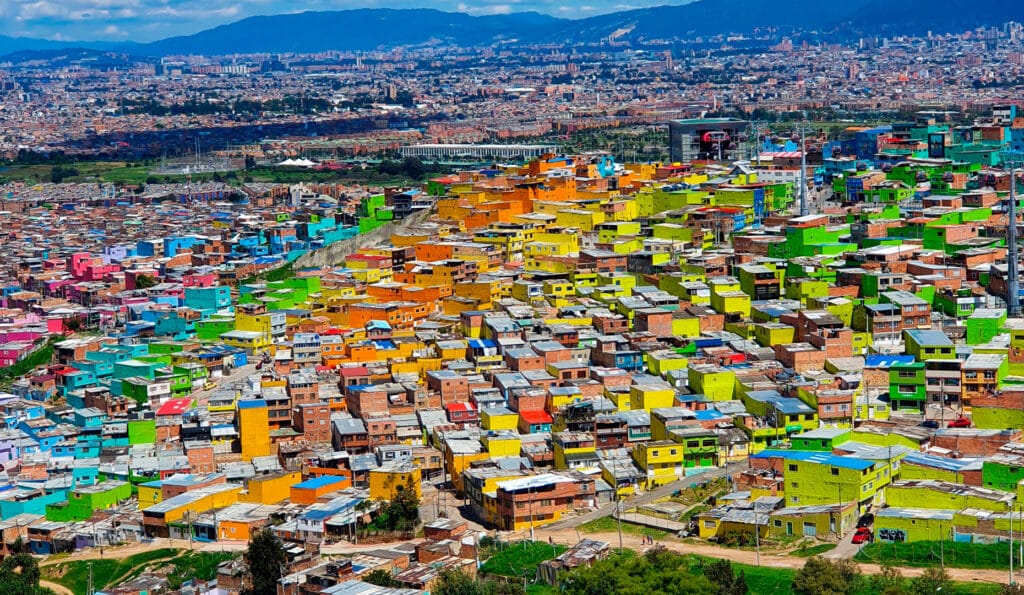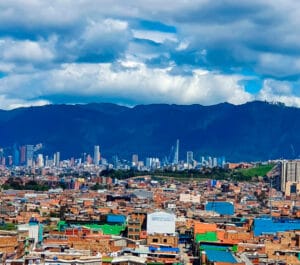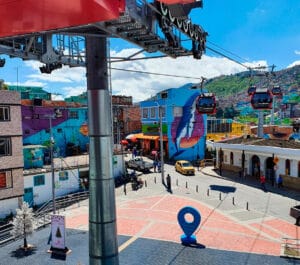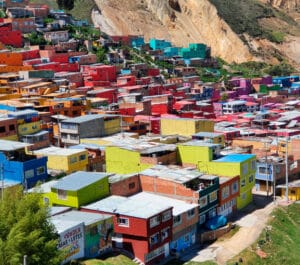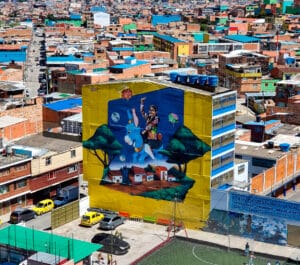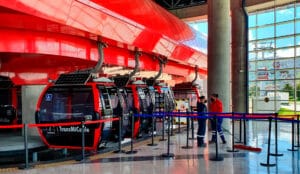Ascending to Ciudad Bolívar: A New Perspective
I’ve always looked at the colorful houses perched on the hilltops from afar, and today, I want to see them up close. We take a cab to the TransMiCable station of Ciudad Bolívar. This expansive district is located in the south of Bogotá. If you include the neighboring districts of Soacha and Usme, more than a third of all Bogotanos live here, often under very challenging conditions. Ciudad Bolívar is a district unfortunately characterized by violence, crime, drugs, and a palpable lack of perspective.
My companion emphasizes that, for safety reasons, we will not be leaving the cable car. The TransMiCable cable car was opened in 2018, primarily to provide residents with a faster, more accessible connection to the city center.
Views from Above: Beauty and Harsh Reality
The ride on the cable car is truly impressive. It’s the myriad of colorfully painted houses, the vibrant graffiti, and the lively bustle on the streets below that immediately capture our attention. The panoramic view of the urban metropolis of Bogotá is nothing short of phenomenal. We see children playing, schools, sports fields, and small stores. Everything seems so normal, and yet, tragically, it is not. Here, countless people live on the lowest poverty line, under extreme conditions.
Upon arriving at the top station, the view also extends to the tin-shack slums. This sight is very oppressive, and I feel immense respect for the people who are forced to live here.
A Poignant Encounter and Lasting Impression
On the way back down, an elderly woman joins us in the cabin. I look into a face deeply marked by sadness and hardship. The colorful houses here create a beautiful cityscape and are intended to express joy of life. But in reality, it’s often just a deception. Behind these vibrant walls and on the streets lie profound, unresolved problems.
Our mood is a bit somber when we arrive back at the valley station. Nevertheless, it was a very important experience for me, one that genuinely helps to understand the daily life and the resilience of the people of Bogotá.

